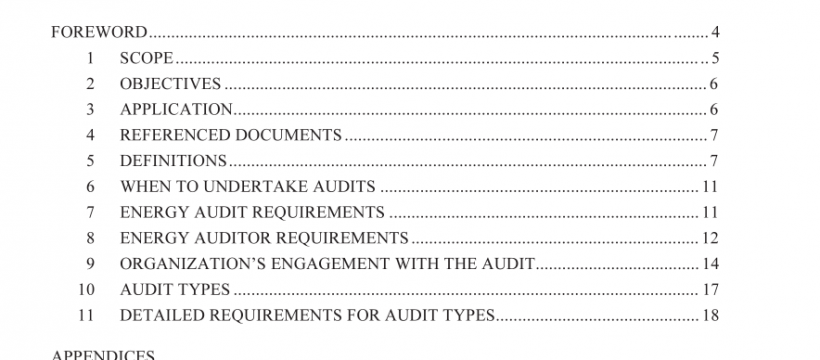AS NZS 3598.2:2014 pdf free download
AS NZS 3598.2:2014 pdf free download.Energy audits
The opportunity evaluation to be outlined in a Type 3 audit report shall include the following:
(a) A list of saving opportunities with simple paybacks up to 4 years, plus any longer payback projects agreed with the organization. This list shall include the following:
(i) All energy savings opportunities for the audited object quantified and specified to the extent necessary to make a recommendation on their implementation, typically to a higher level of accuracy. This includes sufficient clarity of scope for the project to be handed to a third party without the need to complete extensive further investigation to define the scope. Detailed designs of measures are not required.
(ii) Energy savings reconciled against the energy end use breakdown presentation of the impact of each proposed measure against each of the categories presented in the energy end use breakdown. NOTE: This reconciliation is to confirm that savings are a realistic proportion of the consumption of each energy end use and that interactions between opportunities are correctly accounted for.
(iii) Evidence of costs of implementation based on a build-up of both capital and labour items, which shall include site internal and project management costs. Costs shall be to the level of accuracy required by the company’s existing capital expenditure process.
NOTE: The organization may need to assist the auditor with cost data.
(iv) Cost savings which shall include both the energy savings and non-energy savings expected from implementing the recommendation.
NOTE: Non-energy gains may not always be quantifiable within the scope of the audit.
(v) Cost savings which shall be calculated with representation of tariff rate differences including variation in costs with time-of-day and the separation of energy use and peak demand components.
(vi) The demand and energy savings from each opportunity which shall be quantified separately where demand is a separate cost component in the energy tariff.
(vii) Return on investment for each recommendation expressed as simple payback, with any additional analysis as agreed with the organization.
AS NZS 3598.2:2014 pdf free download
